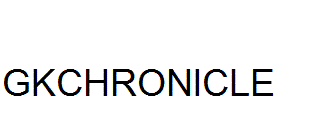Classification of Animal Kingdom
In the classification of animal kingdom, the structural complexity of organisms progress from the most simplest form to the
most complicated form. In the animal kingdom chart, at one end, we observe microscopic organisms and at the other end, we observe the most
complex animals that we encounter in our day today life. The species in the kingdom Animalia are eukaryotic and multicellular organisms that
are not having any cell wall. These organisms are heterotrophic in nature, that means they cannot prepare their food on their own. Aristotle
is called the Father of Biology as well as Zoology.
Animal Taxonomy
In the animal taxonomy, Notochord is used as one of the primary means for the classification of animal kingdom. The Notochord is a
rod shaped cartilage kind of substance present inside the animal body.
Non-Chordates
The animals that do not have the Notochord inside their body are called Non-Chordates or Invertebrates. Non-Chordata animals include the
members of the following phyla,
- Porifera - Ex: Spongilla, Sycon, etc.,
- Coelenterata (Cnidaria) - Ex: Jellyfish, Adamsia, Hydra, etc.,
- Platyhelminthes - Ex: Tapeworm, Fluke, Planaria, etc.,
- Aschelminthes (Nemathelminthes or Nematoda) - Ex: Roundworm, Wuchereria,
etc.,
- Annelida - Ex: Nereis, Earthworm, Leech, etc.,
- Arthropoda - Ex: Cockroach, Mosquito, Locust, etc.,
- Mollusca - Ex: Snail, Pinctada, Octopus, etc.,
- Echinodermata - Ex: Starfish, Ophiura, Sea urchins, etc.
Chordates
The presence of Notochord inside the animal bodies during any stage of their lifespan are called Chordates.
- Phylum Chordata can further be classified into 3 different sub-phyla namely,
- Urochordata - Ex: Ascidia, Herdmania, etc.,
- Cephalochordata - Ex: Branchiostoma, Pikaia, etc.,
- Vertebrata - Ex: Snake, Cat,
Frog, etc.
. Urochordata and Cephalochordata are collectively called Protochordata.
- In Vertebrata, the notochord is modified into a bony and hollow vertebral column called backbone.
- Vertebrates can further be classified into two divisions namely, Agnatha and Gnathostomata. Agnatha division comprises of three Classes of
jawless animals namely,
- Conodonta (extinct now) - Ex: Clydagnathus, Panderodus, etc.,
- Ostracodermi (extinct now) - Ex: Jamoytius, Birkenia, etc.,
- Cyclostomata, which includes the present living jawless fishes - Ex: Hagfish, Lamprey, etc.
- Gnathostomata division is further classified into two Superclasses namely, Pisces and Tertapoda. Superclass Pisces have 3 Classes of
fishes namely,
- Placodermi (extinct now) - Ex: Climatius, Microbrachius, etc.,
- Chondrichthyes, which comprises of cartilaginous fish -
Ex: Sharks, Skates, Electric Rays, etc.,
- Osteichthyes, which comprises
of bony fish - Ex: Common carp, Catfish, Eels, etc.
- Superclass Tetrapoda is further classified into 4 Classes of animals namely,
- Amphibia - Ex: Frog, Toad, Salamander, etc.,
- Reptilia - Ex: Lizards, Snakes, Dinosaurs, etc.,
- Aves -
Ex: Pigeon, Duck, Sparrow, etc.,
- Mammalia - Human, Dolphin, Rat, Whale, etc.
.
Quiz
- Which one of the following organisms does not belong to the phylum Arthropoda?
- Locust
- Mosquito
- Cockroach
- Octopus
Answer
Ans: D
- Who is called the Father of Zoology?
- Jean-Baptiste Lamarck
- Aristotle
- Carolus Linnaeus
- Theodor Schwann
Answer
Ans: B



